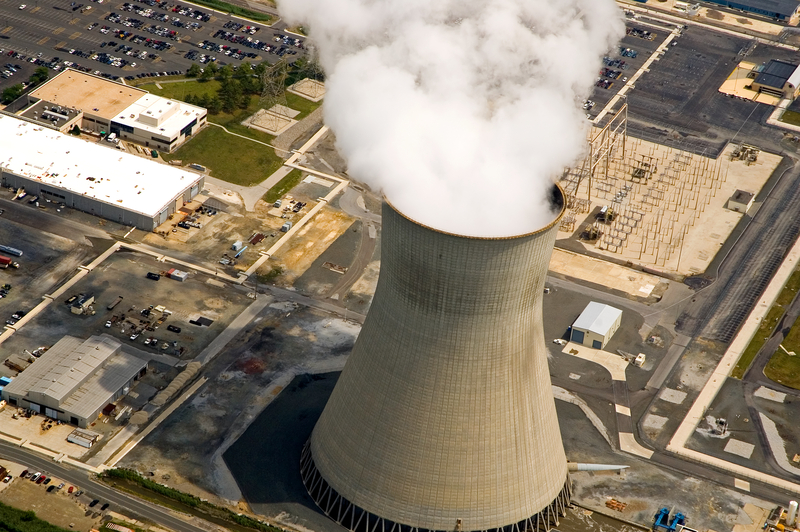The Civil Liability for Nuclear Damage Act, 2010 (CLND Act) is an Indian legislation that establishes a legal framework for addressing civil liability for nuclear damage caused by nuclear incidents. The Act provides for compensation to victims of nuclear incidents, defines the liability of operators, and outlines the process for claiming and distributing compensation.
A few key features of the CLND Act are:
- Operator Liability: The CLND Act establishes the principle of “no-fault liability,” which means that the operator of a nuclear installation is liable for nuclear damage irrespective of whether the incident was caused by their negligence or fault.[1]
- Compensation: The CLND Act provides for a specified amount of compensation to be paid to victims of a nuclear incident. The operator’s liability for each nuclear incident is capped at a maximum amount,[2] which is determined by the central government (GoI). The Act also establishes a Nuclear Damage Claims Commission[3] to assess and award compensation to the victims.
- Nuclear Insurance: The CLND Act requires operators to maintain adequate financial resources to cover their liability for nuclear damage. Operators are required to have insurance or other financial security[4] to meet their liability obligations. The Act also provides for the establishment of a nuclear insurance pool[5] to facilitate the availability of insurance coverage for nuclear installations.
- Supplier’s liability: The CLND Act provides the operator with right of recourse[6] to seek compensation from the supplier in cases where the nuclear incident was caused by a defect in the material, equipment, or services provided by the supplier. However, the liability of the supplier is capped[7] to the limit of the operator’s liability, which remains primary.
The CLND Act, 2010 was enacted to ensure that victims of nuclear incidents receive prompt and adequate compensation. It provides a mechanism for the assessment and distribution of compensation. The CLND Act aims to encourage the development of the nuclear industry in India while safeguarding the interests of the public and victims of nuclear accidents.
While the CLND Act aims to strike a balance between development of the nuclear industry and safeguarding the interests of the public and victims of nuclear accidents, its stringent norms such as no-fault liability tend to discourage private/ foreign entities from investing in what is already a guarded sector. GoI could consider weighing in on options such as (i) linking operator’s liability with indigenous innovation & (ii) lifting ban on private intellectual property (IP) ownership in the nuclear sector to attract more investment into the sector.
- Linking operator’s liability with indigenous innovation – GoI may consider introducing provisions in the liability framework that recognise the adoption of indigenous innovations as a positive factor in determining operator liability. Operators could be offered certain liability protections or limitations for having successfully implemented indigenous technologies to meet the prescribed safety standards. By linking operator’s liability with indigenous innovation, GoI can foster a culture of self-reliance in technology, promote domestic research and development & strengthen the overall safety of the nuclear sector. This way, GoI can maintain its balance of expanding nuclear power capacity while ensuring safety and security.
- Lifting ban on private Intellectual Property (IP) ownership in the nuclear sector – At present India’s nuclear sector operates under a regulatory framework that restricts private ownership of IP in the nuclear industry. The Atomic Energy Act, 1962[8] mandates that all IP related nuclear technology and its applications developed in India be owned and controlled by GoI. Lifting the current embargo in place can potentially encourage innovation and investment, technology transfer & wider collaboration while improving competition and market dynamics. It is worth noting that GoI is gradually taking steps to involve private entities in the nuclear sector, particularly in areas such as nuclear power generation & research. However, specific regulations pertaining to private ownership of IP would require a comprehensive review and revision to the existing legal framework in place.
To this end, GoI could consider referring to the practices followed in countries such as the United States of America, United Kingdom, France, Canada, and South Korea. GoI must first consider its own steps in the Indian Space sector it has been increasingly exploring public-private partnerships (PPPs) and collaborations to foster innovation and enhance participation of private entities. GoI has also taken steps to promote private sector involvement through entities like the New Space India Limited (NSIL) and the Indian National Space Promotion and Authorization Centre (IN-SPACe). However, any concrete developments in this regard would be largely dependent on GoI’s national security concerns.
[1] Section 4(4), CLND Act, 2010
[2] Section 6, CLND Act, 2010
[3] Section 19, CLND Act, 2010
[4] Section 8, CLND Act, 2010
[5] Department of Atomic Energy, ‘FAQs Version 2.0 on CLND Act 2010’, Point 26; https://dae.gov.in/writereaddata/CLND_FAQ_v2_2020.pdf
[6] Section 17, CLND Act, 2010
[7] Rule 24, Explanation 2, Civil Liability for Nuclear Damage Rules, 2011
[8] Section 20, Atomic Energy Act, 1962
Photo: Ken Cole | Dreamstime.com
